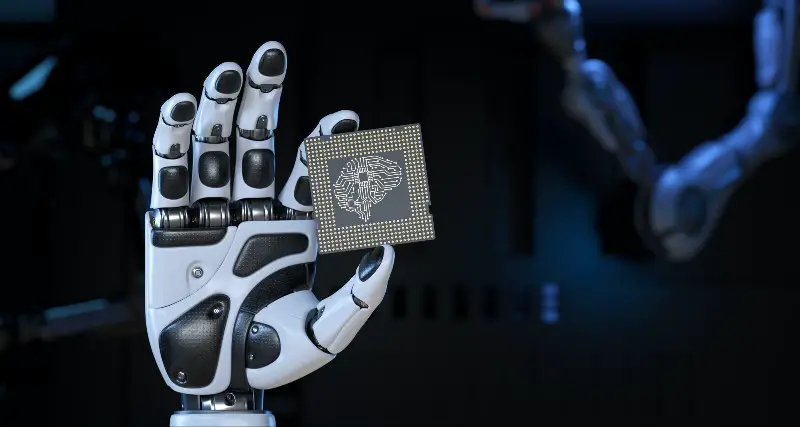“Black Box AI” might sound like something from a science fiction movie, but it’s very much a part of our world today. This term refers to a kind of technology that’s like a mystery box: we can see what goes in and what comes out, but what happens inside is a bit of a puzzle. This blog post is all about unraveling this mystery, in a way that’s easy for anyone, including those with an eighth-grade education, to understand.
We’ll look at how Black Box AI is playing a big role in different areas like finance, the work of developers and data scientists, and computer vision. These are parts of our daily lives, from the way our money is managed to the cool tech that helps computers ‘see’. By the end of this post, you’ll have a clearer picture of what Black Box AI is and why it’s so important.
Finance and Black Box AI
AI in the Financial World
In finance, Black Box AI is like a super-smart assistant that helps make big money decisions. It looks at tons of data – like market trends and stock prices – and uses this info to make predictions or decisions. This can help businesses and investors make smarter choices, like where to invest their money.
The Double-Edged Sword
But it’s not all smooth sailing. Because we can’t always tell how Black Box AI makes its decisions, it can be risky. It’s like having a really smart friend who gives you advice but doesn’t tell you how they came up with it. Sometimes, this can lead to unexpected problems, like wrong decisions that can lose money. So, while Black Box AI is super useful in finance, it’s also important to use it carefully.
Developers and Data Scientists
The Brains Behind the AI
Developers and data scientists are like the chefs who cook up Black Box AI. They mix different ingredients – like computer programming and data – to create AI systems. Their job is super important because they make sure these AI systems can learn from data and get better over time. They’re always trying to improve how these systems work and make sure they’re helpful.
The Challenges They Tackle
Creating Black Box AI isn’t easy. These tech experts have to make sure the AI does its job well and doesn’t cause any problems. For example, they need to check that the AI isn’t biased or making unfair decisions. They have to balance being innovative with making sure their AI systems are safe and ethical.
Computer Vision and Black Box AI
AI That ‘Sees’
Computer vision is a cool part of technology where computers learn to ‘see’ and understand images and videos. With Black Box AI, these systems can get really good at recognizing faces, objects, and even actions in videos. This tech is used in everything from security cameras to helping self-driving cars understand what’s around them.
The Future of Seeing AI
The exciting part about computer vision with Black Box AI is its potential. It could change how we interact with technology, like having smarter security systems or more advanced robots. But, just like with finance, the mystery of how these AI systems make decisions can be a challenge. It’s important to make sure they’re accurate and fair.
Myths vs. Facts about Black Box AI
Debunking Common Misconceptions
There are a lot of myths about Black Box AI. Some people think it’s always dangerous or too complicated to be useful. But that’s not true. Black Box AI can be really powerful and helpful when used right. It’s not always dangerous, but it does need to be used responsibly.
Understanding the Truth
Another myth is that Black Box AI is completely out of our control. In reality, even though we might not understand everything it does, humans are still in charge. We set the rules and goals for the AI. Also, it’s not perfect – it can make mistakes, just like humans. That’s why it’s important to keep an eye on it and make sure it’s working as it should.
FAQ
Answering Your Questions about Black Box AI
What is Black Box AI? Black Box AI is a type of artificial intelligence where we don’t fully understand how the AI makes its decisions. We know what data we give it and what results it gives us, but the process in between can be a mystery.
Why is it called ‘Black Box’? It’s called ‘Black Box’ because, like a black box, you can’t see inside it. The term is used to describe systems where the internal workings are hidden from view. In Black Box AI, the complex calculations and decision-making processes are not easily visible or understandable.
Can we trust Black Box AI? Trusting Black Box AI depends on how well it’s made and used. If it’s designed carefully and used for the right purposes, it can be trustworthy. But it’s also important to remember that it can make mistakes and to always use human judgment as a final check.
How is Black Box AI used in everyday life? Black Box AI is used in many ways, like in personal assistants on your phone, in predicting what you might want to buy online, or in deciding which news articles you see first. It’s becoming more common in our daily lives, often working in the background without us even realizing it.
Will Black Box AI take over jobs? There’s a lot of debate about this. Black Box AI might change the kind of jobs available, like making some jobs easier or creating new kinds of work. But it’s unlikely to completely take over all jobs. It’s more about working alongside humans, not replacing them.
Google Snippets
Quick Insights
Black Box AI: Artificial intelligence where the decision-making process is not transparent. Used in various industries for complex decision-making.
Computer Vision: A field of AI where computers learn to interpret and understand the visual world. Black Box AI enhances its capabilities in image and video analysis.
Future of Work: Refers to changes in the workforce due to technological advancements like AI. Black Box AI influences these changes by automating and enhancing various tasks.
Black Box AI Meaning
Different Perspectives
From a Technical Standpoint: Black Box AI refers to AI systems where the input (data) and output (decision or prediction) are known, but the process of how the AI reaches the conclusion is not clear or is too complex to explain.
User Perspective: For users, Black Box AI can seem like a powerful but mysterious tool that offers solutions without revealing its internal logic or reasoning process.
Ethical Viewpoint: In discussions about ethics, Black Box AI raises questions about transparency, trust, and responsibility, especially in critical applications like healthcare or law enforcement.
Did You Know?
Interesting Facts about Black Box AI
Its Use in Medicine: Black Box AI is being used to diagnose diseases from medical images, sometimes with higher accuracy than human doctors. But its lack of transparency can be a challenge in understanding how it reaches its conclusions.
AI in Art: Black Box AI has been used to create art and music that’s sometimes indistinguishable from human-created works, pushing the boundaries of creativity.
Learning Without Humans: Some Black Box AI systems are designed to learn entirely on their own, without human intervention, leading to new, sometimes unexpected ways of solving problems.
As we’ve seen, Black Box AI is a fascinating and complex topic. It’s making big waves in areas like finance, computer vision, and the work of developers and data scientists. While it brings many benefits, like smarter decision-making and new technological possibilities, it also comes with challenges. The key takeaway is that Black Box AI is a tool – a powerful one, but still a tool. It’s up to us, the people who create and use it, to make sure it’s used in a way that’s helpful, fair, and safe.
Looking ahead, Black Box AI will likely continue to be a big part of our future. As it becomes more common, it’s important for us to keep learning about it, questioning it, and making sure it’s used in the best way possible. After all, technology is at its best when it works for everyone.
References
- Explainable AI that uses counterfactual paths generated by conditional permutations of features. This method is used to measure feature importance by identifying sequential permutations of features that significantly alter the model’s output. The paper discusses the evaluation strategy of comparing the feature importance scores computed by explainers with the model-intern Gini impurity scores generated by the random forest, which is considered as ground truth in the study.
- Thinkful offers insights on how to address the “black box” problem in AI through Explainable AI (XAI) and transparency models. They discuss techniques like Feature Importance Analysis, Local Interpretable Model-agnostic Explanations (LIME), SHapley Additive exPlanations (SHAP), Model Distillation, and Decision Rules, which are designed to make AI models more interpretable and transparent. This is especially important in applications where decisions can have far-reaching consequences, such as healthcare or finance
- Superb AI‘s blog discusses the challenges of the reliability of AI and its adoption into society, given the opaque nature of black box models. The widespread use of AI technologies presents issues related to data bias, lack of transparency, and potential infringement on human rights. The article addresses how Explainable AI is crucial for building AI systems that are not only powerful but also trustworthy and accountable.







